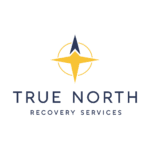The intersection of social media, mental health, and substance use represents one of the most pressing concerns of our digital age. Recent studies show that teenagers who spend more than 6 hours daily on social media are 3.5 times more likely to develop substance use problems compared to their peers with moderate media usage. This complex web of digital influence, psychological vulnerability, and addiction risk creates a perfect storm that demands immediate attention from parents, educators, healthcare providers, and society at large. Understanding these connections is crucial for developing effective prevention strategies and supporting those already struggling with these interconnected challenges.
How Does Social Media Affect Mental Health?
The Psychological Impact of Digital Platforms
Social media use may increase feelings of anxiety and depression, specifically in teens and young adults. The addictive nature of social media activates the brain’s reward system, while excessive use can fuel anxiety, depression, and other mental health issues.
The relationship between social media and mental health is multifaceted:
Negative Effects:
- Increased comparison with others leading to low self-esteem
- Fear of missing out (FOMO) creating persistent anxiety
- Sleep disruption from excessive screen time
- Cyberbullying and online harassment
- Dopamine-driven addiction patterns
Positive Aspects:
- Connection with supportive communities
- Access to mental health resources and information
- Platform for self-expression and creativity
- Maintaining relationships across distances
The Comparison Trap
High levels of engagement with platforms like Instagram and Snapchat can lower self-esteem and increase feelings of inadequacy. Users constantly compare their real lives to the curated, filtered versions presented by others online.
This comparison culture particularly affects:
- Body image and self-perception
- Achievement expectations
- Lifestyle and material satisfaction
- Social status and popularity
What Is the Connection Between Social Media and Substance Abuse?
Digital Influences on Substance Use Behaviors
Social media platforms and gaming sites frequently use data-driven advertising that can inadvertently connect young users with substance-related content. This creates a digital environment where substance use is normalized and promoted.
Key Connection Points:
- Targeted Advertising
- Algorithm-driven content promoting substances
- Influence marketing through lifestyle brands
- Normalization of drinking and drug culture
- Peer Pressure Amplification
- Online party culture documentation
- Viral challenges involving substances
- Social validation through substance-related posts
- Escapism Patterns
- Using substances to cope with online stress
- Self-medication for social media-induced anxiety
- Numbing negative emotions from digital experiences
The Vulnerability Window
Studies show that the most active social media users — particularly those with intense engagement — tend to exhibit concerning mental well-being and high vulnerability to substance-related risks.
This vulnerability manifests through:
- Emotional instability from constant stimulation
- Reduced real-world coping mechanisms
- Impaired decision-making from dopamine dysregulation
- Increased risk-taking behaviors
How Much Social Media Use Is Too Much?
Understanding Problematic Usage Patterns
Children and adolescents who spend more than 3 hours a day on social media face double the risk of mental health problems including experiencing symptoms of depression and anxiety.
Warning Signs of Excessive Use:
- Spending more than 3-4 hours daily on platforms
- Inability to control usage despite negative consequences
- Anxiety when separated from devices
- Neglecting real-world relationships and responsibilities
- Using social media as primary emotional coping mechanism
Age-Specific Guidelines
Teens and Young Adults:
- Maximum 2-3 hours of recreational screen time
- No devices during meals or before sleep
- Regular digital detox periods
Adults:
- Mindful consumption with purpose
- Scheduled breaks throughout the day
- Focus on positive, educational content
Does Social Media Cause Addiction?
Understanding Digital Addiction Mechanisms
Excessive social media use can trigger feelings of inadequacy, dissatisfaction, and isolation, and worsen symptoms of depression, anxiety, and stress. A fear of missing out (FOMO) can keep you returning to social media platforms.
Addiction Characteristics:
- Tolerance: Need for increased usage to achieve satisfaction
- Withdrawal: Anxiety and agitation when unable to access platforms
- Loss of Control: Inability to limit usage despite wanting to
- Interference: Disruption of daily activities and relationships
- Continued Use: Persistence despite negative consequences
The Brain Science Behind Digital Dependency
Social media platforms are designed to trigger dopamine release through:
- Variable reward schedules (likes, comments, shares)
- Infinite scroll mechanisms
- Push notifications and alerts
- Social validation feedback loops
Can Social Media Trigger Substance Use Relapses?
Digital Triggers in Recovery
For individuals in recovery, social media presents unique challenges:
Common Triggers:
- Images of substance use in social settings
- Nostalgia for “party days” through old photos
- Stress from online conflicts or comparisons
- Exposure to substance-promoting advertisements
Protective Strategies:
- Curating feeds to remove triggering content
- Following recovery-focused accounts
- Using privacy settings to limit exposure
- Seeking support through recovery communities online
Building Digital Resilience
Recovery-focused social media use involves:
- Accountability partners in online spaces
- Sharing recovery milestones for positive reinforcement
- Connecting with sober communities
- Using apps designed for recovery support
The Impact on Youth and Adolescents
Developmental Vulnerabilities
More than half of U.S. teens say it would be difficult for them to give up social media. 36% say they spend too much time on social media.
Young people are particularly vulnerable because:
- Brain development continues through mid-twenties
- Identity formation occurs through social feedback
- Peer influence peaks during adolescence
- Emotional regulation skills are still developing
Prevention Strategies for Young Users
For Parents and Educators:
- Open communication about digital wellness
- Setting clear boundaries and expectations
- Modeling healthy technology use
- Providing alternative activities and outlets
For Young People:
- Learning mindful consumption habits
- Developing critical thinking about online content
- Building strong offline relationships
- Practicing self-compassion and authenticity
Breaking the Cycle: Healthy Digital Habits
Creating Positive Change
Individual Strategies:
- Regular social media breaks and detoxes
- Curating feeds for positive content
- Setting specific usage times and limits
- Engaging in offline hobbies and activities
- Seeking professional help when needed
Community Approaches:
- Digital literacy education in schools
- Support groups for problematic usage
- Policy changes for platform responsibility
- Research funding for understanding impacts
Technology Solutions
Helpful Tools:
- Screen time monitoring apps
- Website and app blockers
- Mindfulness and meditation apps
- Recovery support platforms
- Mental health tracking tools
When to Seek Professional Help
Recognizing the Need for Support
Consider professional intervention when experiencing:
- Persistent anxiety or depression linked to social media use
- Inability to control digital consumption
- Substance use as coping mechanism for online stress
- Significant impact on work, school, or relationships
- Thoughts of self-harm or suicide
Treatment Options
Professional Support May Include:
- Cognitive-behavioral therapy (CBT)
- Digital wellness counseling
- Substance abuse treatment programs
- Group therapy and support groups
- Medication when appropriate
Finding Hope and Healing
The connection between social media, mental health, and substance use is complex but not insurmountable. With awareness, intentional choices, and appropriate support, individuals can develop healthy relationships with technology while maintaining their mental wellness and recovery goals.
Recovery is possible, and help is available. By understanding these digital connections and implementing protective strategies, we can harness the positive aspects of technology while minimizing harm.
How True North Recovery Services Can Help
At True North Recovery Services, we understand the complex relationship between digital life, mental health, and substance use disorders. Our comprehensive outpatient addiction treatment program addresses the full spectrum of challenges facing individuals in today’s connected world. We offer specialized support for those struggling with substance use disorders, including opioid and alcohol addiction, while also addressing co-occurring mental health conditions that may be exacerbated by problematic social media use. Our compassionate, evidence-based approach combines traditional therapy with modern understanding of digital wellness, helping clients develop healthy coping strategies and build sustainable recovery. Located in the Denver Metro Area, our team provides personalized care that recognizes the unique challenges of maintaining sobriety and mental wellness in our digital age.


